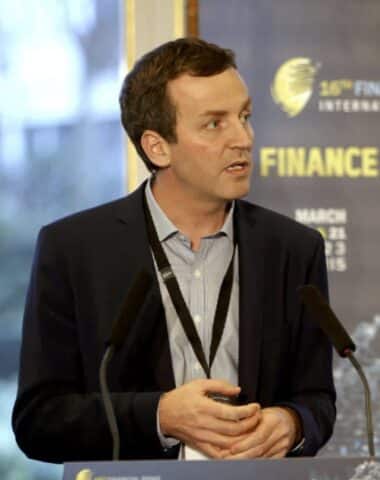Can green finance weather the Trump storm?
- Green finance, understood as the allocation of capital for the environmental transition, is being called into question for political motives.
- In addition, the funding allocated to the transition falls far short of what is needed to keep global temperatures within acceptable limits.
- Beyond necessary government interventions, promoting training, information sharing, investor coalitions, and open access to environmental data would help engage a wide range of actors in sustainable finance and strengthen support for the ecological transition.
- Academic research highlights the growing environmental risks, the financial relevance of which could help convince hesitant investors and public authorities, while moving beyond the notion of ESG to focus more on impact investing.
Green finance, defined as the allocation of capital to support the ecological transition, is undergoing a turbulent period. It is being called into question for political reasons, particularly since Donald Trump’s return to power in early 2025, and because it has become less profitable since the energy shock and the rise in interest rates following the war in Ukraine. Yet, there is a compelling need for finance to go green: among other things, the climate emergency is intensifying, and the need for financing to limit global warming to a reasonable level remains significant. There are reasons for hope, however: recent research in green finance has given us a better understanding of the mechanisms investors can use to pressure companies to go green and has identified tools that could significantly bend the emissions curve. Nevertheless, this will require a strong and concerted effort from civil society, academia, and green investors, who will need to play a greater role to compensate for the lack of ambition displayed by public authorities.
A US-led backlash against a backdrop of unfavourable global macro-political conditions
Since Donald Trump’s first presidential term, investment incorporating environmental, social, and governance (ESG) criteria has been at the heart of political debates in the United States. Some US politicians, such as Florida’s Republican governor Ron DeSantis, described these practices as “woke investment,” that is, politically motivated initiatives that are deemed excessively progressive. Over the past few years, states such as Texas and Florida have restricted the use of ESG criteria in the management of public funds. In addition, following massive withdrawals of public capital from their ESG funds, several major US asset managers have relegated ESG considerations to the background to limit political and reputational risks. As a result, faced with political pressure in the United States and threats of defection from US financial organisations, the Net Zero alliances of financial institutions (NZIA, GFANZ, NZAM) have been dissolved, have announced a downward revision, or even the removal of their climate targets.
Donald Trump’s return to the White House in 2025 has cemented this backlash in regulation. For example, the Securities and Exchange Commission (SEC) has stopped defending its Climate Disclosure rule, and the US Department of Labor is considering repealing the Investment Duties rule, which allowed pension funds to use ESG criteria. In terms of corporate governance, the SEC has reinstated very permissive standards for rejecting shareholder resolutions on climate issues. With regard to the development of “green” infrastructure, subsidies for projects contributing to greenhouse gas reduction have been cancelled, and new wind turbine permits have been suspended.

This political backlash in the US is compounded by an unfavourable global macro-financial environment. The economic slowdown, combined with persistent inflation fuelled by higher tariffs, has brought many energy transition investment projects to a halt. Furthermore, the increase in armed conflicts and the expansionist ambitions of certain countries are hampering the development of green finance, which is suffering from increased military spending and reduced cooperation between countries. As a result, faced with declining returns on ESG assets, some investors have turned away from green investing in search of financial performance.
Inherent obstacles to the development of green finance
In addition, the practice of environmental finance has not yet reached maturity. As far as investors are concerned, although academic research is starting to provide a good understanding of impact investment mechanisms, the range of funds offering this type of investment remains insufficiently developed compared with the offer of traditional “green funds,” and impact measurement indicators are not standardised, particularly with regard to non-climate impacts on nature.
Moreover, regulatory frameworks are fragmented and still under development in most countries. In some cases, they are even being revised to make them less restrictive (see, in particular, the EU Omnibus Act, which aims to reduce the ambitions of the Corporate Sustainability Reporting Directive [CSRD]), due to fears of incompatibility between the socio-environmental objectives of sustainable finance and the perceived or real risks of losing competitiveness. This lack of ambition is also reflected in public policies where, for example, support for the ecological transition still coexists with fossil fuel subsidies in many countries.
As for civil society, it is still insufficiently involved in supporting sustainable investment. This is due to a lack of information on the pressures exerted by human activity on climate and biological equilibria, and on the levers for action that sustainable finance could offer. Additionally, greenwashing by many companies, albeit to varying degrees, is undermining investor confidence and commitment.
As a result, the funding allocated to the transition is still well below the level needed to keep global temperatures at a reasonable level, particularly in emerging countries. According to the Climate Policy Initiative, annual climate finance flows would need to increase fivefold by 2030 – from $1.46 trillion to $7.4 trillion – to stay on track for a 1.5°C global temperature rise.
Positive signs and reasons for hope
Yet, there are good reasons to keep hope alive, as the global momentum for sustainable finance and developments in research on this topic are favourable. Indeed, green investing is gaining momentum and acquiring innovative tools. In 2024, it accounted for $2 trillion, twice as much as investments in fossil fuels1, contributing to the deepening of green markets (e.g., the stock of green and sustainable bonds accounted for $5.4 trillion in Q3 20242). In terms of pricing, companies with the largest environmental footprints finance their debt at a higher cost than the others via a “brown premium3.” In addition, collective initiatives continue to flourish: for example, the Just Energy Transition Partnerships are expanding (e.g., in Senegal with €2.5 billion) and creating a blended finance model to phase out coal in emerging markets4. All this is reinforced by the development of transition plans to assess companies’ alignment with the Paris Agreement targets. In 2023, one in four companies assessed by the Carbon Disclosure Project had a transition plan compatible with a 1.5°C scenario, up 44% from the previous year5.
The favourable momentum of green finance is also observed in the industrial sector. Several industries are greening quickly: for example, in the transport industry, more than one in five cars sold in 2024 was electric6, up 25% from the previous year7. In addition, innovation in green technology is accelerating: for example, the cost of a battery pack fell by 20% between 2023 and 2024, opening up promising prospects for massive development of energy storage8.
Finally, from a research perspective, significant progress is being made in understanding the mechanisms through which investors can incentivise companies to become greener. In terms of ESG investment screens, several recent studies9 show how necessary it is to build a portfolio that takes into account the externalities and financing needs of all companies in the economy – not just those in the investment portfolio – to maximise the additionality of the investment relative to a counterfactual state. Moreover, the significant benefits of shareholder engagement have been documented by several early empirical works10.
Levers for action by governments, society, and researchers
So, what levers can be used to harness finance for an ambitious ecological transition in this chaotic environment? Ideally, governments should reinforce the favourable dynamics of green investment by, among others: strengthening funding from public agencies and multilateral development banks to increase the number of projects financed, thereby increasing the supply of green financial assets; supporting blended finance projects to reduce the cost of capital for companies contributing to the ecological transition and catalyse an increase in private investment; making the commitments made under the Net Zero alliances legally binding; harmonising standards and taxonomies on an international scale; combating greenwashing (through the development of labels, reinforced monitoring, and even the introduction of legal liability); supporting green R&D; and repealing fossil fuel subsidy policies.
However, the political and geopolitical environments lead us to acknowledge that these ambitious binding measures are unlikely to be implemented in the near future. In this context, what room for manoeuvre do civil society, businesses, and investors have to compensate for government inaction?
A first lever for action is to enable as many players as possible (universities, companies, municipalities, administrations, associations, etc.) to develop training and awareness-raising programmes on environmental issues and the available sustainable finance instruments. Support should also be given to the development of initiatives promoting investor coalitions. This could strengthen shareholder activism on environmental issues and initiatives to disseminate information widely to stakeholders. Furthermore, the development of free, open-source data platforms on companies’ environmental footprints would give retail and small institutional investors easy access to key metrics. In addition, support for the ecological transition, which includes increasing the number of impact funds offered by asset managers, would also benefit from the rise of environmentally-focused crowdfunding platforms.
Finally, academic research has an important role to play. It is essential to support researchers and research projects on environmental issues whose activities are compromised in their home country. Emphasising environmental risks, which are becoming increasingly threatening, and whose financial materiality is not in question, could enable green finance to regain the confidence of the most reluctant investors and public authorities. However, beyond these undeniable risks, research needs to further analyse the conditions under which investment can most effectively support the ecological transition. In particular, the focus should shift from ESG investing to impact investing, as ESG is a concept that encompasses heterogeneous and sometimes contradictory dimensions, exposing it to criticism and facilitating greenwashing practices. This is all the more important given that the common ESG strategies are not the most effective in spurring companies to green their business models.
Conclusion
At the dawn of Donald Trump’s second term, green finance is stalling politically and facing systemic challenges. Yet, recent advances in both technology and academia offer grounds for optimism. By mobilising researchers, investors, and civil society, it is still possible to harness finance to achieve a path compatible with ambitious climate objectives. While the urgency is obvious, the instruments are available. What is needed now is the political and collective will to mobilise them!
References:
- Bolton, P., Kacperczyk, M. T., 2021. Do investors care about carbon risk? Journal of Financial Economics 142, 517–549.
- Green, D., Roth, B., 2024. The allocation of socially responsible capital. Journal of Finance, Forthcoming Paper.
- Heeb, F., Kölbel, J., 2024. The impact of climate engagement: A field experiment. Working Paper.
- Hsu, P., Li, K., Tsou, C., 2023. The Pollution Premium. Journal of Finance 78, 1343–1392.
- Oehmke, M., Opp, M. M., 2025. A Theory of Socially Responsible Investment. The Review of Economic Studies 92, 1193–1225.
- van der Kroft, B., Palacios, J., Rigobon, R., Zheng, S., 2025. Timing sustainable shareholder proposals in real asset investments. Working Paper.
- Zerbib, O. D., 2022. A Sustainable Capital Asset Pricing Model (S‑CAPM): Evidence from Environmental Integration and Sin Stock Exclusion. Review of Finance 26, 1345–1388.
















